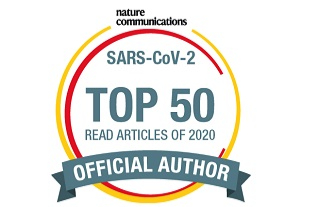
Timothy Sheahan, PhD
About
Dr. Sheahan is an assistant professor in the Department of Epidemiology at the University of North Carolina at Chapel Hill's Gillings School of Global Public Health.
Dr. Sheahan is an expert virologist whose research is focused on understanding emerging viral diseases and developing new means to stop them. Dr. Sheahan was raised in Rhode Island and fell in love with microbiology during his undergraduate studies at the University of New Hampshire. After working as a lab technician at Harvard Medical School and Mass General Hospital and playing in rock bands at night, he moved to North Carolina to pursue graduate studies on the original SARS Coronavirus with Dr. Ralph Baric at UNC-Chapel Hill. He left the Tar Heel State in 2009 for a postdoctoral fellowship studying the hepatitis C virus with Dr. Charles Rice at The Rockefeller University. After a stint learning antiviral drug discovery and development at GlaxoSmithKline, Dr. Sheahan enthusiastically joined the Gillings School as faculty in July 2015. Dr. Sheahan is currently engaged in multiple interdisciplinary research projects across multiple schools and departments at UNC to address the immediate public health emergency of COVID-19.
What are emerging viruses?
Viruses infect all living things. They are continually and invisibly circulating among wild and domestic animals. Sometimes these viruses “emerge” and jump from animal reservoirs to cause new diseases in humans. Thus, emerging viruses are not “new” but are new to us because they were previously not known to cause disease in humans. The COVID-19 pandemic caused by the virus, SARS-CoV-2, serves as a prime example of this process.
Preparing for tomorrow’s pandemics, today.
Just as there are broad-spectrum antibiotics that target several different kinds of bacteria, we aim to develop broad-spectrum antivirals effective against a variety of emerging viruses including those we know about and those that have yet to emerge. This way, we maximize the potential impact on global public health and our preparedness for future pandemics.
The Goals of Dr. Sheahan’s research are to:
- Better understand how viruses jump into humans.
- Develop new models to study how emerging viruses cause disease.
- Identify drugs, antibodies and vaccines for the emerging viruses of today but also those that emerge in the future.
Multimedia
Awards

Dr. Sheahan's article "Comparative therapeutic efficacy of remdesivir and combination lopinavir, ritonavir, and interferon beta against MERS-CoV" was one of the most read* Nature Communications articles on SARS-CoV-2 in 2020.
Timothy Sheahan in the Gillings News
Key Publications
An orally bioavailable broad-spectrum antiviral inhibits SARS-CoV-2 in human airway epithelial cell cultures and multiple coronaviruses in mice. T. P. Sheahan, A. C. Sims, S. Zhou, R. L. Graham, A. J. Pruijssers, M. L. Agostini, S. R. Leist, A. Schafer, K. H. Dinnon, 3rd, L. J. Stevens, J. D. Chappell, X. Lu, T. M. Hughes, A. S. George, C. S. Hill, S. A. Montgomery, A. J. Brown, G. R. Bluemling, M. G. Natchus, M. Saindane, A. A. Kolykhalov, G. Painter, J. Harcourt, A. Tamin, N. J. Thornburg, R. Swanstrom, M. R. Denison, R. S. Baric. (2020). Science Translational Medicine, PMID: 3192475.
Comparative therapeutic efficacy of remdesivir and combination lopinavir, ritonavir, and interferon beta against MERS-CoV. T. P. Sheahan, A. C. Sims, S. R. Leist, A. Schafer, J. Won, A. J. Brown, S. A. Montgomery, A. Hogg, D. Babusis, M. O. Clarke, J. E. Spahn, L. Bauer, S. Sellers, D. Porter, J. Y. Feng, T. Cihlar, R. Jordan, M. R. Denison, R. S. Baric (2020). Nature Communications, 11(1), 222.
Increasing the translation of mouse models of MERS coronavirus pathogenesis through kinetic hematological analysis. S. R. Leist, K. L. Jensen, R. S. Baric, T. P. Sheahan (2019). PLoS One, 14(7), e0220126.
Broad spectrum antiviral remdesivir inhibits human endemic and zoonotic deltacoronaviruses with a highly divergent RNA dependent RNA polymerase. A. J. Brown, J. J. Won, R. L. Graham, K. H. Dinnon, 3rd, A. C. Sims, J. Y. Feng, T. Cihlar, M. R. Denison, R. S. Baric, T. P. Sheahan (2019). Antiviral Research, 169(104541).
Broad-spectrum antiviral GS-5734 inhibits both epidemic and zoonotic coronaviruses. T. P. Sheahan, A. C. Sims, R. L. Graham, V. D. Menachery, L. E. Gralinski, J. B. Case, S. R. Leist, K. Pyrc, J. Y. Feng, I. Trantcheva, R. Bannister, Y. Park, D. Babusis, M. O. Clarke, R. L. Mackman, J. E. Spahn, C.A. Palmiotti, D. Siegel, A. S. Ray, T. Cihlar, R. Jordan, M. R. Denison, R. S. Baric (2017). Science Translational Medicine, 9(396).
The Role of Phosphodiesterase 12 (PDE12) as a Negative Regulator of the Innate Immune Response and the Discovery of Antiviral Inhibitors. E. R. Wood, R. Bledsoe, J. Chai, P. Daka, H. Deng, Y. Ding, S. Harris-Gurley, L. H. Kryn, E. Nartey, J. Nichols, R. T. Nolte, N. Prabhu, C. Rise, T. Sheahan, J. B. Shotwell, D. Smith, V. Tai, J. D. Taylor, G. Tomberlin, L. Wang, B. Wisely, S. You, B. Xia, H. Dickson (2015). Journal of Biological Chemistry, 290(32), 19681-96.
Interferon lambda alleles predict innate antiviral immune responses and hepatitis C virus permissiveness. T. Sheahan, N. Imanaka, S. Marukian, M. Dorner, P. Liu, A. Ploss, C. M. Rice (2014). Cell Host and Microbe, 15(2), 190-202.
Mechanisms of zoonotic severe acute respiratory syndrome coronavirus host range expansion in human airway epithelium. T. Sheahan, B. Rockx, E. Donaldson, A. Sims, R. Pickles, D. Corti, R. Baric (2008). Journal of Virology, 82(5), 2274-85.
Education
- PhD, Microbiology / Immunology, University of North Carolina at Chapel Hill, 2008
- BS, Microbiology / Water Resource Management, University of New Hampshire, 1999
